Mirella Sichirollo Patzer's Blog, page 33
January 9, 2013
DEATH OF A FANTASY
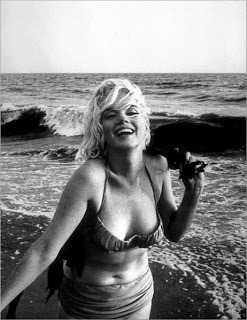
Bernie Taupin said she lived her life like a candle in the wind.
She played a dumb blonde to perfection yet she wasn’t at all dumb; she wasn’t
even blonde. She was arguably the most explosive sex symbol of the twentieth
century - and also one of its most tragic celebrities.
Born
of a mentally unstable mother in 1926, young Norma Jeane Mortenson soon became
a ward of the state and trailed through a string of foster homes, frequently the victim of sexual abuse.
Somehow Norma Jean became Marilyn
the sex goddess, Everyman’s fantasy; but the reality of what lay beneath
the peroxide hair and the breathless voice was something very different.
“No one ever told
me I was pretty when I was a little girl. All little girls should be told they’re
pretty, even if they aren’t.”
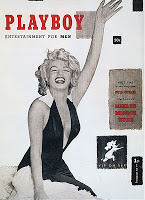
In
her early twenties Norma Jeane was one of Blue Book's most successful models,
appearing on dozens of magazine covers. It brought her to the attention of a
20th Century Fox film executive who told her she would become the next Jean
Harlow and renamed her Marilyn Monroe.
One
of her early films saw her gain equal top billing with Charles Laughton and a
star-studded cast - for just a minute of screen time. Most of that minute was
spent walking away from the camera.
As critic Constance Bennett remarked: "There's a broad with her future
behind her."
“Hollywood is a
place where they’ll pay you a thousand dollars for a kiss and fifty cents for
your soul.”
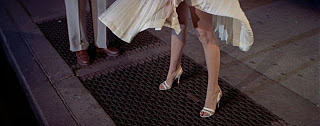
In
1954 she married one of America’s great sporting icons - Joe di Maggio. Neither
of them suspected then that her star would soon eclipse his. The marriage was short
lived. Joe’s traditional values did not sit easily with Monroe’s public persona;
Ed Sullivan described her onscreen performance of ‘Heat Wave’ as "one of
the most flagrant violations of good taste" he had ever witnessed.
But
it was the iconic skirt blowing scene in “The 7 Year Itch” that
led to a huge row between the couple; shortly afterwards, they divorced.
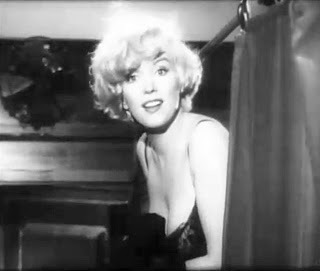
She enjoyed huge public adoration but her private life was a mess. By the time she played “Sugar” in “Some Like it Hot” the writing was on the wall.
She was proving to be a difficult and temperamental star; Curtis described
their love scenes as "like kissing Hitler".
“I’ve
been on a calendar, but I’ve never been on time.”
Her first husband had introduced her to barbiturates and she had been hooked on
them ever since. She had also attempted suicide on at least one occasion. By 1961 her dependence on alcohol and pills had taken a huge
toll on her health. That year she divorced her third husband, the writer Arthur Miller, and booked
herself into a psychiatric clinic.

Ironically
her last completed picture was called ‘The Misfits’. Clark Gable’s wife later
claimed Marilyn’s behavior on set brought on her husband’s fatal heart attack
shortly afterwards.
“Dreaming about
being an actress is more exciting than being one.”
In
1962 she started filming “Something’s Gotta Give” - and it did. On May 19 she
attended the birthday celebrations of John F. Kennedy at Madison Square Garden
and famously sang “Happy Birthday Mister President.”
Looking
at it now, the clip is achingly poignant.
“I
have too many fantasies to be a housewife. I think I am a fantasy.”
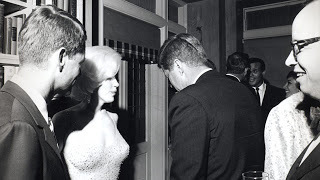
Since
childhood, she had been unable to cope with any form of rejection or criticism;
her hypersexuality,
insomnia, substance abuse and disturbed interpersonal relationships were all symptomatic
of terrible childhood trauma.
JFK was the last man Marilyn needed in her life right then; a notorious womanizer, he ended
their brief affair by ignoring her increasingly frantic phone calls and then sending younger brother Bobby to sort out the mess.
His wife Jackie was reportedly unhappy about
the very public birthday serenade and had threatened to divorce him if he
didn’t get rid of her, and that would have ruined his chances of re-election. Besides, he
had already tired of her. She was just another notch on a well-carved bedpost.
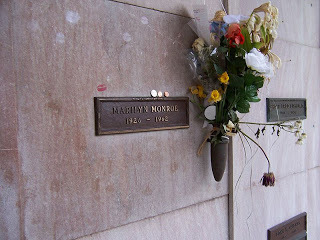
“To
put it bluntly, I seem to have a whole superstructure with no foundation. But I’m
working on the foundation.”
On
August 5, 1962, Monroe was found dead at her home in Brentwood, LA. She was 36
years old. The coroner found a large quantity of barbiturates in her
bloodstream and ruled it a probable suicide. But conspiracy theorists still maintain she was murdered, with the two
Kennedy brothers as well as the CIA and the Mafia complicit.
Less fancifully, it is alleged that JFK was the last person she called.
And so the candle was snuffed out halfway through. She
was buried in a private ceremony wearing her favorite green Emilio Pucci dress
and holding a small bouquet of pink teacup roses. For the next 20 years, DiMaggio
had red roses placed in a vase attached to her crypt.
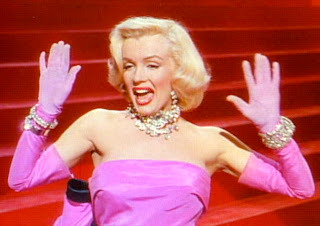
“Being
a sex symbol is a heavy load to carry, especially when one is tired, hurt and
bewildered.”
She
is now one of History’s most famous women; and also the least understood. As she
herself said:
“I knew I belonged to the public and to the world, not because I
was talented or even beautiful, but because I had never belonged to anyone or
anything else.”
WE LOVE COMMENTS

From History and Women









Published on January 09, 2013 01:30
January 2, 2013
The Italian Woman by Jean Plaidy (The Catherine de Medici Trilogy)
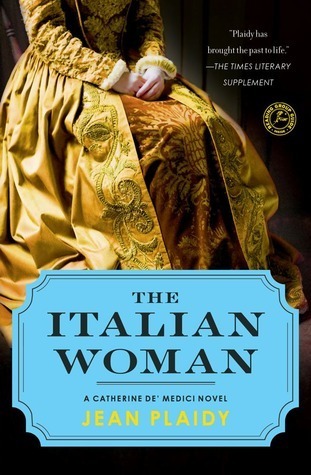
When
Catherine de' Medici was forced to marry Henry of Orleans, her's was not the
only heart broken. Jeanne of Navarre once dreamed of marrying this same prince,
but like Catherine, she must bend to the will of King Francis's political
needs. And so both Catherine and Jeanne's lives are set on unwanted paths,
destined to cross in affairs of state, love and faith, driving them to become
deadly political rivals.Years later Jeanne is happily married to the dashing
but politically inept Antoine de Bourbon, whilst the widowed Catherine
continues to be loved by few and feared by many – including her children. But
she is now the powerful mother of kings, who will do anything to see her
beloved second son, Henry, rule France. As civil war ravages the country and
Jeanne fights for the Huguenot cause, Catherine advances along her unholy road,
making enemies at every turn…
Author Jean Plaidy has been a long time favourite author of
mine. The Italian Woman is the second
novel in a trilogy about Catherine de’Medici and her nemesis, Queen Jeanne of
Navarre. The first book in the series is titled Madame Serpent and the third book in the series is Queen Jezebel. I recommend reading the books in order to get the most from the stories and characters.
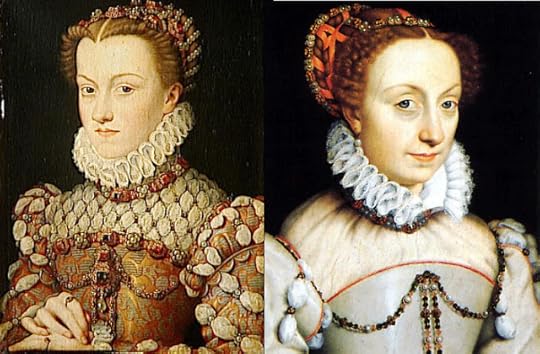
Catherine de Medici Jeanne de Navarre
Both Catherine and Jeane are strong-willed, outspoken, intelligent,
and dynamic. Since childhood, the paths of these stalwart women continually
cross, forcing them to encounter each other in political and social occasions. While
Catherine was unpopular, Jeanne was well liked despite her tendency to be
unyielding and stubborn. This brings plenty of conflict into the story –
Catholic vs Protestant, marital successes vs marital failures, deviousness vs straightforwardness,
and much more. Despite their differences, they were similar in their love for
their children, their ambitions, and their passion for France. Their rivalry
intensifies with each page until their enmity becomes unmanageable.
Now a widow, Catherine begins to take vengeance on her
husband’s mistress, Diane de Poitiers, after years of humiliation. Although her
eldest son is now king, she desires to see Henry, her favourite child and will do
all that she can to put him there. As dowager queen and regent for her son, she
can wield power over Jeanne. Jeanne, princess of France, is Catherine’s late husband’s
cousin. Jeanne is a staunch Huguenot
Protestant while Catherine is devoutly Catholic. In the political arena, this
places them at odds with Protestant England and Catholic Spain, bringing great
tension and historical detail into the story.
Jean Plaidy is one of the great historical fiction authors
of our time. Her books have been favourites and bestsellers for decades. She
has a knack for taking complex stories and tell them in an easy, exciting way.
Catherine de Medici is depicted as a no-nonsense, hard-headed, conniving woman
who must survive in a court fraught with intrigue, danger, and deadly political
ambitions. Sometimes, the author fell into the trap of “telling” too much instead
of bringing the story to life through action, but wonderful descriptions,
historical details that enrich, and compelling characters bring to life this
fascinating time in history and the two women who struggled to survive within
its confines.
WE LOVE COMMENTS

From History and Women









Published on January 02, 2013 10:28
December 29, 2012
THE QUEEN WHO WOULD BE KING - THE STORY OF HAPSHETSUT
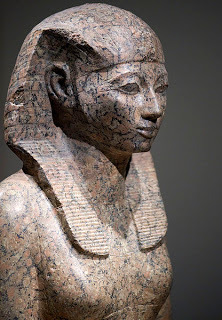
Rob Koopman
It
was once written of her: “To look upon her was more beautiful than anything.” But
these days Hapshetsut is not the beauty she once was. Her eyes are black resin,
her nostrils plugged with linen. She is bald.
But
still - not bad for a woman who has been dead for three and a half thousand
years.
The
queen of Thutmose II, she became one of the greatest of the New Kingdom kings.
She was the oldest
daughter of Thutmose but could not assume the throne on his death because of
her gender. So when he died she was required to marry her half brother - the
Egyptians had no qualms about incest if it strengthened the royal lineage - and when Thutmose II died as well she became regent because the next in line, her
stepson Thutmose III, was still a child.
But then she
stopped behaving as regent and acted instead like a king. Why? Perhaps pride;
she was part of the royal bloodline - while her husband-brother had merely
married into it.
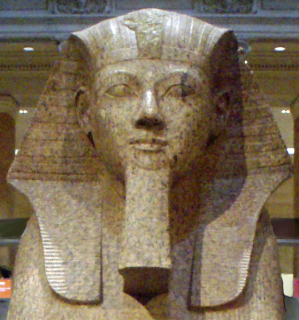
Hatshepsut - the bearded lady
But she could
not be king because she was a woman. It was against Egyptian laws and religion.
So temple reliefs showed her dressed as a man, in a pharaoh’s headdress, shendyt
kilt, and false beard. (Though she may not have worn this costume, as it is
unlikely that most make pahaohs did.) But it formed part of a media blitz spinning
a tale of the great god Amun telling Khnum, the ram-headed god of creation:
"Go, to fashion her better than all gods; shape for me, this my daughter,
whom I have begotten." On Khnum’s potter’s wheel little daughter Hatshepsut is
shown as a boy.
But
her legitimacy must have troubled her. She became obsessed with history and how
she would be remembered. She commissioned hundreds of statues of herself, as
well as obelisks and temples all over Egypt, each enshrining her lineage, her
titles and her history.

"Now my
heart turns this way and that, as I think what the people will say. Those who
see my monuments in years to come, and who shall speak of what I have
done."
She died of
natural causes around 1458 B.C. Her stepson Thutmose III went on to become one
of the great pharaohs, the Napoleon of ancient Egypt. He then tried to wipe his
stepmother's reign off the face of history.
At Karnak her
image and cartouche, or name symbol, were chiselled off the
walls, the texts on
her obelisks covered with stone. Her statues were smashed and tossed into a
pit.
It was long
assumed that this was an act of a spiteful stepson taking vengeance on an unscrupulous
stepmother. In fact it was done near the end
of his reign to legitimize his son Amenhotep II's succession.
In fact it is more likely that it was ordered by by Amenhotep himself, who was co-regent at the end of Thutmose III’s
reign, when Thutmose was old and almost retired.
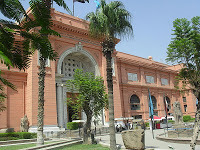
Christophe95
And so the queen
who dreaded anonymity lay in the dark in a dank limestone cave for almost three
and a half thousand years in a mess of rags. For at least the last hundred
years she was just KV60a, an insignificant mummy discovered in a minor tomb in
the Valley of the Kings. She did not even have a sarcophagus.
But recently Egyptologists identified her discarded mummy and it now has pride of place in one of the two Royal Mummy rooms at the Egyptian museum in Cairo.
At last she
has what she always wanted - she has endured. Thousands of people wander past her mummified body
every year, to gaze in mystified awe at the last remains of Hatsheput - the
queen who would be king.

Cleopatra on Amazon
Colin Falconer is the author of the internationally bestselling CLEOPATRA, DAUGHTER OF THE NILE and over twenty other novels. See more history from Colin Falconer at
LOOKING FOR MR GOODSTORY
WE LOVE COMMENTS

From History and Women









Published on December 29, 2012 19:10
December 23, 2012
Henry VIII's Christmas Message
Published on December 23, 2012 17:41
December 19, 2012
DIANA, PRINCESS OF WALES, QUEEN OF EVERYONE

photograph: George Biard
What makes a woman great?
Is it celebrity, like Marilyn Monroe? Is it saintliness,
like Mother Theresa? Is it political ambition, like Cleopatra?
Or is it something more elusive than any of these?
It is now fourteen years since Diana, Princess of Wales,
died in that horrific car smash in the Pont de l'Alma tunnel in Paris, yet the
anniversary of her fiftieth birthday last year saw a fresh outpouring of public
grief.
For a major celebrity, Diana was remarkably self
deprecating: "I don't even know how to use a parking meter, never mind a
phone box." Her greatest talent was in being nice to people: "I want
to walk into a room, be it a hospital for the dying or a hospital for the sick
children, and feel that I am needed. I want to do, not just to be."
Did this make her a great woman? Her critics said no,
because she never held any position of political power. But in a BBC poll she
was voted third of "100 Greatest Britons", easily outranking her
former mother-in-law and placing her above Shakespeare, Darwin, Newton and
Nelson.

This infuriates those who argued that she achieved nothing
in her life. They ignore her tireless work for the Great Ormond Street Hospital
for Children and the International Campaign to Ban Landmines - the victims of
anti-personnel mines were and are mostly children. The ban was effected shortly
after her death, and in a world seemingly run by arms dealers this was no small
achievement.
My mother certainly thought Diana was a great woman. She was
no royalist, the only other Windsor she had time for was the Queen's mother.
She was of the generation that lived in London during the Blitz and still
remembers that Queen Mary didn't leave London during the bombing - she stayed
"with us".
She reckoned Diana was of the same stripe. Mum even once
owned a Princess Diana doll. It was about two feet tall, and looked more like
Barbie on steroids, dressed up for a day at the races. It was a real talking
point in her house for many years, (along with the inflatable two metre high
kangaroo in the backyard.) Diana's greatest virtue, in her words, was that she
wasn't "stuck up".

photograph: Rick
She had the common touch. And for East Enders like
my mother, that was everything.
Few women in history have inspired the same kind of
adoration as Diana. Perhaps because she said things like: "HIV does not
make people dangerous to know, so you can shake their hands and give them a
hug: heaven knows they need it."
Yet opinion about her remains divided, as with any famous
person. One of her more spiteful biographers wrote that she was a
"demanding shopaholic ... obsessed with her public image"; her
brother eulogized her as "the most hunted person of this modern age."
She was certainly an enigma: she appeared to be a woman on a
desperate search for love yet she once said: "People think that at the end
of the day a man is the only answer. Actually, a fulfilling job is better for
me."
She will be much written about in the future, I guarantee.
In a hundred years historical fiction authors like me will pore through the
history files looking for the facts about her for their own stories. But what
will those facts be?
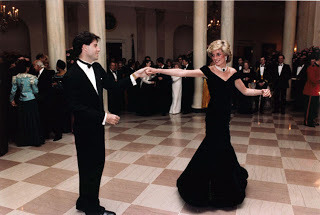
Every saint has a dirty secret; even a monster may have an
adoring grandchild. The really interesting thing about famous people is not how
many lovers they had, how many battles they won, or countries they ruled. They
become truly interesting when they have a human face. Great virtues side by
side with obvious failings can be very appealing.
Diana was certainly very human. It was part of her charm.
She had the opportunity to help the less fortunate and took it wholeheartedly;
she went about doing good while most of us just go about.
It is too soon to write the first unfettered historical
novel about her. But I suspect she will become one of the most enduring women
in history. God knows there have been few enough men or women of true celebrity
and glamour who have done so much for others while remaining as fallible and
earthy and flawed as the rest of us.
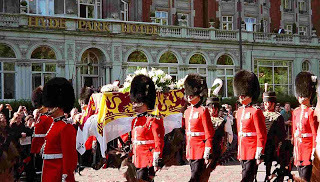

See Colin Falconer's latest novel, Anastasia, here,
and more history from Colin Falconer at
LOOKING FOR MR GOODSTORY
WE LOVE COMMENTS

From History and Women









Published on December 19, 2012 07:52
November 22, 2012
Linda Hazzard and her Killer Cure
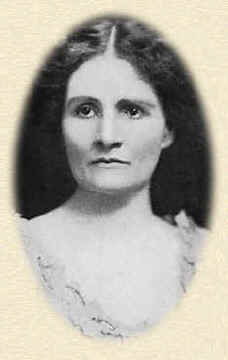
Linda Burfield Hazzard
1867 - 1938
Linda
Burfield Hazzard was born in 1867 in Carver County, Minnesota. In many ways,
she was a feminist of her time. She received training as an osteopathic nurse,
and she was a successful author. However, Linda Hazzard had one obsession: to
promote her experimental cure. Her ambition prompted her to leave her husband
and two children to pursue her career in Minneapolis.

Touting
fasting as a miracle cure for all disease, Linda Hazzard fed her patients
meager portions of vegetable broth and forced them to undergo lengthy and
painful enemas. Hazzard claimed that these procedures cleansed the body of all
toxins, and that all ailments were the simple result of an imbalance of the
blood. It was in Minneapolis that Linda Hazzard killed her first patient.
The
coroner determined that the death was caused by starvation, and he attempted to
have Hazzard prosecuted. However, because Hazzard wasn't licensed to practice
medicine, she wasn't held accountable. To add to the questionable circumstances
of the death, investigators noted that the victim's valuable rings had gone
missing.
In
the years that followed, Hazzard met and married her second husband, Samuel
Hazzard, a debauched West Point graduate who had failed to divorce one of his
former wives. The couple's nuptials were overshadowed by a highly publicized
trial during which Sam was convicted for bigamy. After Sam completed a two-year
sentence for his crime, Mr. and Mrs. Hazzard decided to start over in
Washington. Thanks to a loophole in Washington law, Hazzard was allowed to take
on the title of "doctor" and to acquire licensure to practice her
deadly cure.
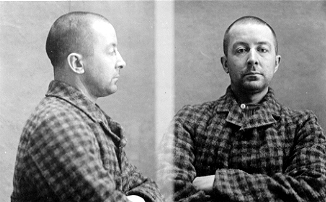
Sam Hazzard
It
was also in Washington that Dr. Hazzard formed her grand vision to build a
sanitarium where she could house patients, but to build such an establishment,
she would need money. She commuted to Seattle from her 40-acre plot of land in
Olalla, which she called "Wilderness Heights", where she found a
thriving client base among health faddists of the day.

Wilderness Heights
(Starvation Heights)
Despite killing at least one patient the tesame year, she released her first book Fasting for the Cure in 1908, which promoted fasting as the solution to all disease, including cancer.
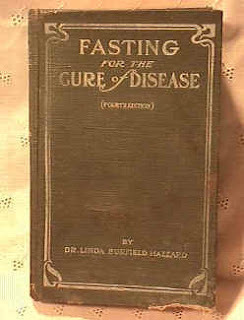
Eventually,
she earned enough money to build a ramshackle sanitarium of cabins, where
inpatients were prescribed the standard broths and enemas. A pattern began to
appear as Wilderness Heights began delivering emaciated corpses to the local
morgue. In addition to taking their lives, Dr. Hazzard managed to finagle her
way into some of her patients' wills. Despite the mounting evidence of foul
play, authorities and health officials were unable to intervene. Dr. Hazzard
was licensed and her patients were accepting treatment willingly.
But
just how willing the patients were is debatable. Many described Dr. Hazzard as
an incredibly persuasive orator, and some believed that her patients were too
intimidated to disobey her. Sick, malnourished and at the brink of death, many
patients were delirious and incapable of escape or resistance. In many ways,
Dr. Hazzard tricked her patients into becoming completely under her control.
Authorities
weren't the only ones who were catching on to Dr. Hazzard's maniacal
procedures. Locals nicknamed the Wilderness Heights sanitarium "Starvation
Heights" in reference to the emaciated bodies that were confined to the
cabins or wandered to the road to ask for food. It took three years and an
estimated 40 deaths, but in 1911, Dr. Hazzard's twisted and greedy motives came
to light.
During
a trip to Canada, two wealthy British sisters named Dorothea and Claire
Williamson stumbled upon Dr. Hazzard's book. The two sisters were reputed
hypochondriacs and were very curious about alternative medicine. Because they
wished to avoid any scorn from their family, the sisters decided to seek Dr.
Hazzard and undergo treatment.
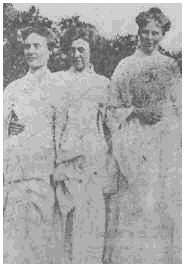
Dorothy and Claire Williamson with a friend
The
two sisters were treated in Seattle until malnutrition brought them to the
brink of death. They were delivered to Wilderness Heights in two ambulances,
but before Claire Williamson starved to death, she signed over a portion of her
inheritance to Dr. Hazzard's practice. Dorothea surely would have fallen victim
to the same fate, had she not been able to smuggle a telegram to her former
Nanny, Margaret Conway.
When
Conway arrived at Dr. Hazzard's Seattle office, she was informed of Claire's
death. She was appalled to find Dorothea, emaciated and helpless, living in one
of the cabins in Wilderness Heights. Perhaps even more disturbing was seeing
Dr. Hazzard wear one of Claire's silk dressing gowns and favorite hat. Further
researched revealed that the Hazzards had been given power of attorney over
Dorothea's assets and had been taking money from the patient.
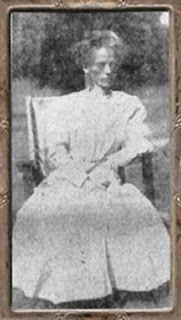
Dorothea Williamson in emaciated state
At
first, Dorothea begged to be taken away, but then later recited that the cure
was helping her. When Conway tried to take Dorothea out of the sanitarium, the
Hazzards revealed that they were Dorothea's legal guardians and that the
British heiress would be forced to live with them until she died. Conway
immediately contacted the sisters' uncle in Portland, who came to the rescue. The
Hazzards, however, refused to let Dorothea leave until her $2,000 bill was
paid. The uncle was able to negotiate a less expensive ransom.
With
financial help from Dorothea and pressure from the British Vice-consul in
Washington, the county was able to try and convict Dr. Hazzard of manslaughter
and her medical license was revoked. After serving a two-year sentence, Mrs.
Hazzard and her husband moved to New Zealand, where she practiced under a
number of titles and released a new book that made her a great deal of money.
By
1920, she had made enough money to see her dream come true. She returned to
Olalla to build a 100-bed sanitarium, complete with its own autopsy room, which
would keep any nosey coroners from estimated a death toll in the new Starvation
Heights. Because she no longer had a medical license, the sanitarium was
cloaked with the title "school of health". Even after the sanitarium
burned down in 1935, Hazzard continued practicing her miracle cure. Committed
to the end, Dr. Hazzard followed her own medical advice in 1938 to cure an
illness. At 71, she died quickly of starvation.

Linda Hazzard's School of Health
100 room sanitorium
Diary of Earl Edward Erdman
(One of Linda Hazzard's Patients)
February 1- Saw Dr. Hazzard and began treatment this date. No breakfast. Mashed soup dinner. Mashed soup supper.
February 5 through 7- One orange breakfast. Mashed soup dinner. Mashed soup supper.
February 8- One orange breakfast. Mashed soup dinner. Mashed soup supper.
February 9 through 11- One orange breakfast. Strained soup dinner. Strained soup supper.
February 12- One orange breakfast. One orange dinner. One orange supper.
February 13- Two orange breakfast. No dinner. No supper.
February 14- One cup of strained tomato broth at 6 p.m.
February 15- One cup hot strained tomato soup night and morning.
February 16- One cup hot strained tomato soup a.m. and p.m. Slept better last night. Head quite dizzy. Eyes yellow streaked and red.
February 17- Ate three oranges today.
February 19- Called on Dr. (Dawson) today at his home. Slept well Saturday night.
February 20- Ate strained juice of two small oranges at 10 a.m. Dizzy all day. Ate strained juice of two small oranges at 5 p.m.
February 21- Ate one cup settled and strained tomato broth. Backache today just below ribs.
February 22- Ate juice of two small oranges at 10 a.m. Backache today in right side just below ribs.
February 23- Slept but little last night. Ate two small oranges at 9 a.m. Went after milk and felt very bad. Ate two small oranges 6 p.m.
February 24- Slept better Wednesday night. Kind of frontal headache in a.m. Ate two small oranges 10 a.m. Ate on and a half cups hot tomato soup at 6 p.m. Heart hit up to ninety-five minute and sweat considerable.
February 25- Slept pretty well Thursday night. Ate one and a half cups tomato broth 11 a.m. Ate one and a half cups tomato broth 6 p.m. Pain in right below ribs.
February 26- Did not sleep so very well Friday night. Pain in right side just below ribs in back. Pain quit in night. Ate 1 and a half cups tomato broth at 10:45 a.m. Ate two and a half pump small oranges at 4:30 p.m. Felt better afternoon than for the last week....
Jillian
Terry is a full-time writer for www.teachingdegree.org,
where she writes about educational topics and offers advice to new teachers. In
her spare time, Jillian Terry watches the History Channel and reads mystery
novels.
WE LOVE COMMENTS

From History and Women









Published on November 22, 2012 11:12
November 11, 2012
Captain Nichola Kathleen Sarah Goddard (May 2, 1980 - May 17, 2006)

Captain Nichola Kathleen Sarah Goddard, MSM, was the first female Canadian combat
soldier killed in combat, and the 16th Canadian soldier killed in Canadian operations in Afghanistan.
The daughter of school teachers, Nichola was born in Madang, Papua New Guinea. Her early years were spent moving to numerous Canadian
locations with her parents. The family settled in Edmonton, Alberta for a while
before moving to Antigonish Nova Scotia. There Nichola attended high school and
took up running and cross country skiing. Her team nicknamed her “Carebear” a
fitting tribute for the caring and considerate person she was.

Nichola entered the Canadian military, serving
with the Princess Patricia’s Canadian Light Infantry, and soon rose to the rank
of captain.

In January 2006, her regiment was shipped to Afghanistan. Captain Goddard arrived in
January 2006 and began her duties as a forward observation officer.

Almost immediately,
Nichola found herself embroiled in battle, but not on the battlefield. All
service personnel were housed in large white tents. The conflict started a
month after her arrival when Lt.-Col. Ian Hope
issued an order to hang tarps in the sleeping quarters to separate the females
from the males. Never a shrinking violet, Nichola was outraged. For months, she
had undergone the same strenuous, unremitting training as the men she led, sleeping
in the same trenches, sharing close quarters, fighting as equals. Nichola wrote
a letter to Hope, reminding him that the days of “objecting to mixing genders
in combat is over.” Despite the passion behind her words, she failed to sway
her commander and the tarps remained hanging, a bitter reminder of her loss and
the struggles of women in the military.

On May 17, 2006, rumors that the Taliban were
preparing to launch an assault on the city, resulted in Nichola and the crew becoming
in involved in a firefight in the Panjwaye
District. As troops were moving into a mosque to capture 15 alleged
Taliban members, several dozen hidden militants began firing from neighboring
houses. Moments before her death, Nichola became the first army officer, male
or female, to direct artillery fire against an enemy force since the Korean
War. As crew commander, Nichola was standing half-exposed in her LAV III,
when it was struck by two rocket-propelled grenades.

In honor of Nichola’s ultimate sacrifice, a school
in Calgary was named after her.
Nichola, your courage and beauty will live on in
the hearts of all those whom you loved and left behind. Thank you for your sacrifice.
We are proud of you and will let your name live on forever.

WE LOVE COMMENTS

From History and Women









Published on November 11, 2012 11:14
November 5, 2012
The General's Mistress by Jo Graham

A sinful, decadent story about an adventurous woman and her lovers!
Liberté, Egalité, Sensualité. . . .As a spirit of change overturns Europe’s old order, strong-willed
Elzelina Versfelt enters her own age of revolution. Married as a romantic young
girl to a man who wanted only her money, but neither loves nor desires her,
Elza refuses to be chained any longer. Leaving Amsterdam, her marriage, and her
home, she flees to France—where the old rules no longer apply, debauchery is
not a sin . . . and nothing is forbidden.
Yet Elza finds herself bound in a new way, to the ambitious General
Moreau. And while they share pleasure, pain, and carnal adventures, she dreams
of another man, an unruly red-haired soldier she first saw in the promise of a
Tarot card. Drawn by this half-real, half-imagined hero, Elza defies her
relationship with Moreau, and begins a perilous search across war-torn Europe.
. . . But will this woman with the instincts of a survivor, the passion of a
courtesan, and the gift of second sight ever find the destiny for which she has
risked it all?
This stunning novel blends history with the language of the heart to
tell a sensual story of an era of upheaval . . . and of the clamoring,
dangerous desires of a woman’s soul.
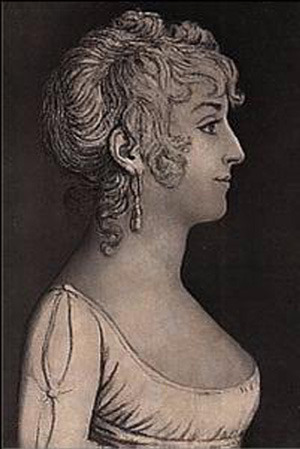
Ida Saint-Elme
The General’s Mistress by Jo Graham is a novel
based on the personal memoirs of Elzelina
av Aylde Jonghe, also known as Ida Saint-Elme (27 September 1776 – 19 May 1845). She became
an actress, writer, and led a most audacious life.
The General’s Mistress by Jo Graham is a novel
based on the personal memoirs of Elzelina
av Aylde Jonghe, also known as Ida Saint-Elme (27 September 1776 – 19 May 1845). She became
an actress, writer, and led a most audacious life.
In 18th century Amsterdam, Elzelina,
at the tender age of twelve, is married to a man old enough to be her father –
a man who married her solely for her generous dowry. Unhappy, when she turns
nineteen, she leaves her husband and two sons and flees to start a new life in Paris.
There, she encounters a strong, controlling man named General Victor Moreau who
aids Napoleon’s rise to power and later becomes his enemy.
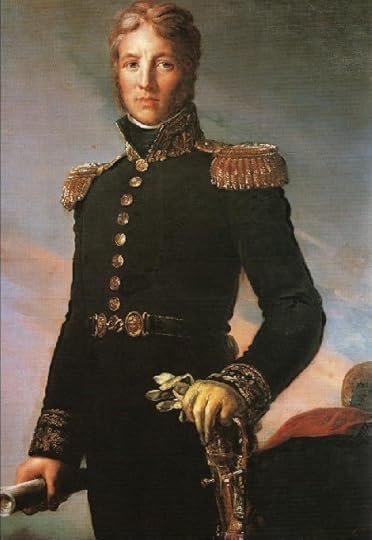
General Victor Moreau
Elzelina inevitably succumbs
to his allure and becomes his mistress. She harbors the hope that she will one
day be married to him, but a reading of the tarot cards reveals she will meet
and fall in love with a red haired man who will be the true love of her life.
This man turns out to be Michel Ney, a commander in Napoleon’s army.
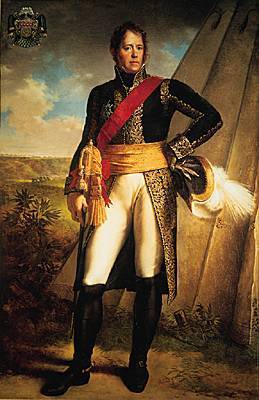
Marshal Michel Ney
1st Duc d'Elchingen
1st Prince de la Moskowa
Both of her lovers were fabulously handsome and desirable. Illicit love, violence, betrayal, the theatre, and
historical detail are carefully interwoven to make a great story narrated by
the heroine herself. Even though Elzelina is not a heroine that is easily
admired or respected, she is nevertheless a true historical person and the
decisions she made in her life she personally recorded in the writing of her personal
memoirs that catapulted her into fame. Elzelina’s story is sinful and captivating
with its séances, tarot cards, battles, romance, and intrigue set in Napoleonic
France. A most fascinating woman!
WE LOVE COMMENTS

From History and Women









Published on November 05, 2012 10:21
November 1, 2012
Grand Duchess Elizabeth of Russia- with Guest Post by Christina Croft
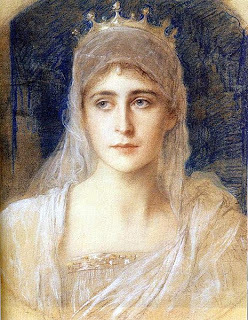
Elizaveta Feodorovna
Today marks the birthday of Grand Duchess Elizabeth of Russia - a much
loved, legendary royal who is also a 20th century martyr and saint.
(I've always associated Nov. 1st with All Saints Day- so now I'll always
remember it as this royal's b-day too!)
I have the (Grand;) pleasure of having Christina Croft honor us with
her Guest Post. If you don't know much about the Grand Duchess, read
on- her story is amazing!
Christina Croft writes:
Above the West Door of Westminster Abbey, stands a series of statues
dedicated to 20th Century Martyrs – among them a Russian Orthodox nun, who was
murdered by the Bolsheviks in July 1918 by being thrown down a mineshaft and
left to starve to death. Of the thousands of tourists and visitors who enter the
Abbey each month, very few seem to be aware of this woman’s remarkable story,
nor would they suspect at first glance that ‘Saint Elizabeth of Russia’ once
entered the Abbey to attend the celebratory service to mark the Golden Jubilee
of her grandmother, Queen Victoria.
‘Ella’ as she was known in the family, was the second daughter of Queen
Victoria’s daughter, the unconventional Princess Alice, who married the heir to
the Grand Duchy of Hesse-Darmstadt and immediately caused a sensation by
inviting various unorthodox thinkers to her home, and venturing into the homes
of the poor and the sick to scrub their floors, make meals and tend to their
needs, following the advice of Florence Nightingale, whose works she studied
avidly. Queen Victoria was not amused by her daughter’s studies of nursing and
biology, but was even more shocked when she discovered that she was
breast-feeding baby Ella. So disgruntled was the Queen, that she immediately
sent word that a cow in the Royal Dairy should be named ‘Alice’!
Unperturbed, Alice continued her ‘wayward’ pursuits and was keen to instil
her own values of service into her children. From their earliest years she took
them with her to hospitals, where she performed the most menial tasks, and, at
the same time ensured they received a broad-ranging education. Alongside
academic studies, they were taught gardening and cooking and were expected to
take full responsibility for themselves, without relying on servants. Ella
enjoyed a wonderfully happy childhood but, when she was fourteen years old, a
diphtheria epidemic broke out, affecting all the rest of her family. For her own
safety, Ella was sent to stay with her paternal grandmother but during her
absence her youngest sister, May, died and shortly afterwards Alice, who had
been personally tending the rest of the family, contracted the disease and died
at the age of only 35.
Queen Victoria’s heart went out to Alice’s children and, promising ‘to be a
mother to them’, she did everything possible to support them, and she did not
fail to notice that Ella was blossoming into a very beautiful young woman. At
this time, Ella’s cousin, the future Kaiser Wilhelm II, fell madly in love with
her and the Queen was eager to promote a match but, as Ella adamantly refused
his proposal, the Queen resigned herself to finding alternative suitors all of
whom Ella rejected. By now she had the reputation of being ‘the most beautiful
princess in Europe’ and combined with her striking beauty, she was seen as the
‘personification of kindness’. Queen Victoria was certain that she would find a
suitable husband but was totally unprepared for Ella’s sudden announcement that
she intended to marry Grand Duke Serge Alexandrovich – a younger brother of Tsar
Alexander III of Russia. The Queen was horrified. Russia, she said, was
unstable, the climate was appalling and the Romanov Court was decadent but Ella
stood firm and, at the age of 19, married the Grand Duke in a lavish ceremony in
St. Petersburg.
Now, one of the wealthiest and most beautiful women in the world, she
appeared to have stepped into a fairy tale but, within a short time, rumours
began to circulate that her marriage was desperately unhappy. Her shy and
highly-strung husband’s aloof manner made him very unpopular, and gossips
revelled in spreading stories of his cruelty to his innocent wife. The fact that
the couple had no children fuelled the (totally unsubstantiated) rumours that he
was homosexual and increasingly prurient tales about their relationship spread
through all the Courts of Europe. For twenty years this continued, despite
Ella’s frequent protestations that she loved him and was ‘perfectly happy’, but
throughout that time her many talents were being stifled in the endless routine
of balls and receptions; and even though, after converting to Orthodoxy, she
spent a good deal of time and money supporting and founding various charities,
as a Romanov Grand Duchess she was not permitted to venture far beyond the walls
of her palaces or to visit the poor or the sick as she had done throughout her
childhood.
1905 was a year of great tumult in Russia and, as discontent and violence
spread through the country, Serge became the object of hatred. One February
morning, as Ella was working on a project for the relief of soldiers in the
Russo-Japanese War, an anarchist hurled a bomb at Serge’s carriage. Hearing the
explosion, Ella hurried to the scene to find what was left her husband: his arm,
leg and head had been blown off, and the blast was so great that days later his
fingers were found on the Kremlin roof. With her own hands, Ella gathered his
remains, and a couple of days later went to the prison where her husband’s
assassin was being held. She handed the assassin a Bible and an icon, and told
him she had come to forgive him and to ask what had driven him to such violence.
He spoke of the terrible poverty of the people and his words clearly resonated
with Ella who throughout her life had – according to her own account - ‘a
longing to help those who suffer; particularly those in moral suffering’.
Within days of their meeting, she began to dispense with all her vast
wealth and made plans to establish a hospital, orphanage and convent in the
poorest part of Moscow. Establishing a new religious order, she trained as a
nurse and personally tended the most abject patients whom other hospitals
refused to take, and devoted the rest of her relatively short life to improving
the lives of the poorest Russian people. Having grown up and lived amid beauty
for so long, it was her intention to create beauty in the lives of those who had
only known drudgery and poverty. Her hospital was designed and decorated by the
finest architects and artists in Russia, and was open to anyone in need of help;
the gardens were well-tended and her intention was to establish similar places
throughout the country. In fact, such was her devotion to her cause that she
was, in a gentle way, far more revolutionary than the revolutionaries who
arrested and murdered her in 1918, simply because she had married ‘a
Romanov’.
In my novel - Most Beautiful Princess – I have endeavoured to remain as true
to history as possible. There are no fictional characters in the book, which is
based on my earlier unpublished biography, and my intention in writing it was to
make this remarkable woman better known. The novel is available in paperback,
Kindle and Apple format.
Should you pass the West Door of Westminster Abbey, do look up and see the
statue of ‘the most beautiful princess’, Queen Victoria’s saintly granddaughter.
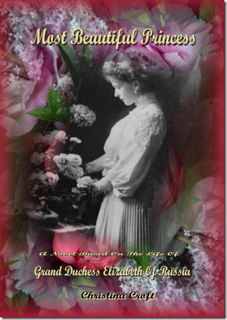
If you'd like a chance to win Most Beautiful Princess, enter a giveaway here
WE LOVE COMMENTS

From History and Women









Published on November 01, 2012 07:19
October 31, 2012
Madame Serpent by Jean Plaidy
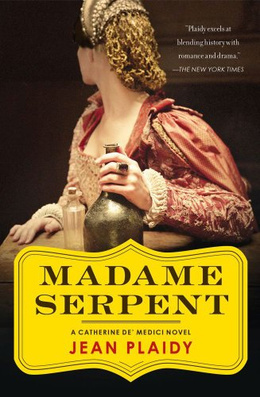
Fourteen-year-old Catherine de’ Medici arrives in Marseilles to marry Henry, Duke of Orleans, second son of the King of France. The brokenhearted Catherine has left her true love in Italy, forced into trading her future happiness for marriage into the French royal family.
Amid the glittering fÊtes and banquets of the most immoral court in sixteenth-century Europe, the reluctant bride becomes a passionate but unwanted wife. Humiliated and unloved, Catherine spies on Henry and his lover, the infamous Diane de Poitiers. Tortured by what she sees, Catherine becomes consumed by a ruthless ambition destined to make her the most despised woman in France: the dream that one day the French crown will be worn by a Medici heir. . . .
Madame Serpent is the first book of a trilogy about Catherine de Medici. This opening novel begins with Catherine's childhood and her subsequent political marriage to Henry, Duke of Orleans, who later became King Henry II of France. Catherine’s story is one about coming of age and of the court machinations that formed her into the devious woman she was forced to become. Ignored by her husband who prefers Diane de Poitiers, his much older, more experienced mistress, over his wife, Catherine forms a strong bond with her father-in-law, King Francis I.
Author Jean Plaidy delves deep into the malice and indignities Catherine suffered throughout her childhood and into adulthood, which ultimately shaped not only her character, but her destiny. Her unrequited love for her husband, Henry, makes the reader sympathetic with her character. She suffers much humiliation and mistreatment not only by her husband, but by her husband’s mistress who usurps her authority at every opportunity. So who is Madame Serpent? Is it Catherine or is it Diane? The answer is up to the reader to decide.
It is this conflict that appears on every page of this novel and that kept me turning pages to read more about this fascinating woman. Author Jean Plaidy knows how to write a book that draws readers immediately and indelibly into the story, making her characters feel as real as life. The prose is flowing and invisible, with plenty of descriptions as to gowns, food, and décor of the time. By far, this is the best novel I have read about Catherine de Medici and am eager to read the second and third books of the trilogy. For fans of this famous queen, this is a must have for your book shelf.
WE LOVE COMMENTS

From History and Women









Published on October 31, 2012 10:50








